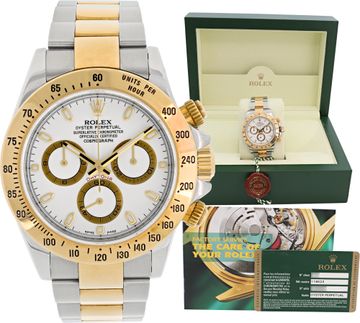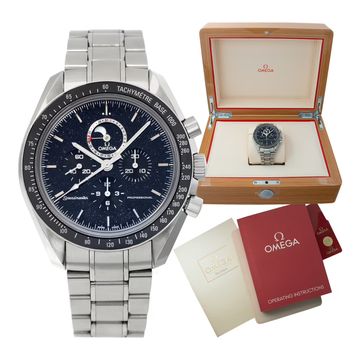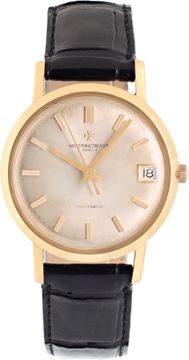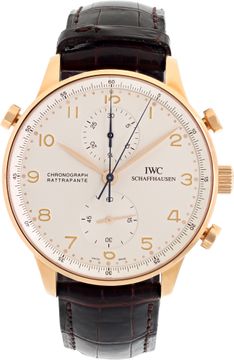Understanding Watch Movements: Manual, Automatic, and Quartz Explained
Understanding Watch Movements: Manual, Automatic, and Quartz Explained
At the heart of every timepiece lies its movement—the intricate mechanism that powers the watch and enables it to keep time. Whether you're a seasoned luxury watch collector or simply curious about what makes your wristwatch tick, understanding the differences between manual, automatic, and quartz movements can enhance your appreciation of these remarkable instruments. Each type offers distinct advantages, engineering philosophies, and historical significance that appeal to different wearers for different reasons.
Manual Movements: The Traditional Art of Watchmaking
Also known as hand-wound movements, manual movements represent the oldest and most traditional form of watch mechanism. Dating back to the 16th century, these movements embody the purest expression of mechanical watchmaking.
How Manual Movements Work
A manual movement operates through a relatively straightforward principle: energy is stored in a mainspring when the wearer winds the crown. This energy is then gradually released through a series of gears called the gear train, which transfers power to the escapement. The escapement regulates this energy release, allowing the hands to move at a consistent rate across the dial.
The beauty of a manual movement lies in its simplicity and the direct connection between the wearer and the watch. Every day or two (depending on the power reserve), the owner must wind the crown to keep the watch running—a ritual that many enthusiasts find deeply satisfying and personal.
Luxury Brands and Manual Movements
Patek Philippe has long been revered for its exceptional hand-wound movements. Their calibers represent the pinnacle of traditional watchmaking, with their manual Caliber 215 PS being particularly celebrated for its thinness and precision. The brand's commitment to hand finishing every component, even those invisible to the wearer, exemplifies the artisanal quality that makes manual movements so special.
Audemars Piguet, while known for many innovations, continues to craft some of the world's most impressive manual movements. Their ultra-thin manual calibers have set numerous records, with the 2.2mm thick Caliber 2003 demonstrating how the absence of automatic winding mechanisms allows for remarkable slimness in high horology.
Manual movements remain particularly appealing in dress watches, where thinness is prized. Without the automatic winding mechanism, these watches can be crafted with slimmer profiles. The transparency offered by exhibition casebacks showcases the movement without an oscillating weight blocking the view. The daily winding ritual creates a unique bond between the owner and their timepiece, though forgetting this routine will cause the watch to stop.
Automatic Movements: Self-Winding Convenience
Automatic movements represented a significant evolution in watchmaking when they gained popularity in the early 20th century, though the concept dates back to the late 1700s with Abraham-Louis Perrelet's early designs.
How Automatic Movements Work
An automatic (or self-winding) movement builds upon the manual movement's foundation by adding a weighted rotor that swings freely with the natural motion of the wearer's wrist. As this rotor rotates, it winds the mainspring, continuously storing energy. This ingenious system eliminates the need for daily manual winding as long as the watch is worn regularly.
The core timekeeping mechanism still operates on the same mechanical principles as a manual movement, with the mainspring, gear train, and escapement working in harmony. The key difference is how that mainspring receives its energy—from motion rather than manual intervention.
Rolex and the Perpetual Revolution
No discussion of automatic movements would be complete without acknowledging Rolex's transformative role. While Rolex didn't invent the automatic movement, they perfected and popularized it with their "Perpetual" rotor system. In 1931, Rolex introduced a centrally mounted rotor that could wind the watch by rotating in either direction, a significant improvement over earlier designs. This innovation made automatic watches truly practical for everyday wear.
Rolex's consistent refinement of the automatic movement has resulted in exceptionally reliable calibers like the modern 3235, which offers improved power reserve, accuracy, and magnetic resistance. Their focus on robustness and reliability rather than decorative finishing represented a philosophical shift in watchmaking that emphasized practical performance—a cornerstone of the brand's identity.
The convenience of no daily winding, perpetual operation with consistent wear, and the tactile feedback of feeling the rotor rotate with wrist movements make automatics particularly popular. However, they do require slightly thicker cases to accommodate the winding mechanism and need periodic servicing every 5-7 years. If left unworn beyond their power reserve (typically 38-72 hours), automatic watches will stop and require setting before wearing again.
Quartz Movements: Modern Precision
The quartz revolution of the 1970s fundamentally transformed the watch industry, introducing unprecedented accuracy at affordable prices and nearly decimating the traditional Swiss watch industry before it reinvented itself as a luxury market.
How Quartz Movements Work
A quartz movement operates on an entirely different principle than its mechanical counterparts. At its core is a small quartz crystal that vibrates exactly 32,768 times per second when electricity passes through it—a property known as piezoelectricity. These incredibly consistent vibrations are counted by an integrated circuit, which sends a precise electrical pulse once per second to advance the second hand.
The power source is typically a small battery that lasts between 1-5 years, depending on the watch's functions. Some modern quartz watches also incorporate solar charging or kinetic energy harvesting to extend battery life.
Luxury Brands Embrace Quartz
While many luxury brands initially resisted quartz technology, some embraced it to spectacular effect. Patek Philippe's response to the quartz crisis was not just to preserve traditional watchmaking but also to demonstrate mastery of the new technology. Their early quartz movements were finished to the same exacting standards as their mechanical counterparts, elevating quartz from mere practicality to high art. The Patek Philippe Caliber E15 from the 1970s was one of the first Swiss-made quartz movements that sought to bring haute horlogerie finishing to electronic timekeeping.
Audemars Piguet similarly created exceptional quartz timepieces, including the revolutionary Royal Oak Quartz models that helped sustain the company through difficult times. These weren't mere concessions to market pressure but genuine expressions of horological innovation.
The primary advantages of quartz include remarkable accuracy (typically deviating by only about 15 seconds per month), low maintenance with minimal upkeep beyond occasional battery changes, and ease of implementing advanced functions like chronographs, perpetual calendars, and multiple alarms.
Your Journey to Luxury Watch Excellence
Acquiring a fine timepiece with any of these distinctive movements is more than just a purchase – it's an entry into the world of horological artistry that can potentially be enjoyed for generations. Whether you're drawn to the heritage of a manually-wound Patek Philippe with its exquisite hand-finished caliber, the innovation of an Audemars Piguet Royal Oak with its revolutionary automatic movement, or the precision of a modern quartz timepiece, understanding each movement type is essential. Every luxury timepiece represents countless hours of craftsmanship, with master watchmakers dedicating their expertise to creating these mechanical or electronic marvels that blend technical innovation with timeless tradition.
Beyond understanding the movement itself, commitment to proper maintenance is crucial for preserving both the functionality and value of your collection. A regular watch repair includes thorough cleaning, movement inspection, lubrication, and careful calibration to ensure optimal performance. Professional servicing helps prevent minor issues from developing into major problems that could compromise your watch's accuracy and longevity, whether it features a classic manual caliber, a sophisticated automatic movement, or a high-precision quartz system.
When your collection evolves or your preferences change, Sell Us Your Jewelry offers a premium service for those looking to sell their luxury watches. If you decide to sell your watch, our transparent evaluation process ensures you receive competitive market value for your well-maintained pieces, whether featuring vintage manual movements or modern automatic calibers from prestigious manufacturers. Our horological experts carefully assess each movement's condition, complexity, and market demand to provide fair offers that recognize the care you've invested. For those wondering, "Where can I find a knowledgeable luxury watch buyer who understands the difference between movement types?" or "What's the best place to sell my collection of diverse timepieces?" Our team is here to help you navigate every step of the way.
Exquisite Pre-owned Luxury Watches and Jewelry: New Arrivals for May 2025
NEXT ARTICLE
The Evolution of Rolex Sports Models: From Tool Watches to Cultural Icons










